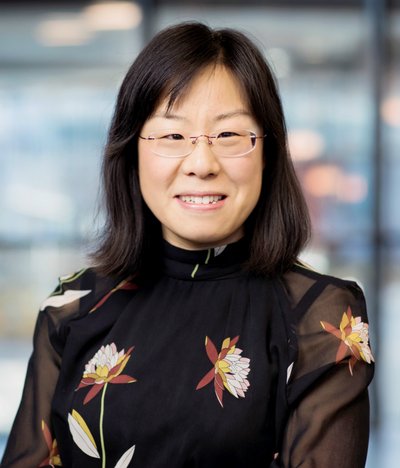Shuxia Tao
Department / Institute
Group

RESEARCH PROFILE
Shuxia Tao currently serves as an Associate Professor of Computational Materials Physics within the Department of Applied Physics at TU/e. Her research pursuits revolve around the advancement and application of atomistic and multiscale computational methodologies for the purpose of designing novel materials optimized for energy and optoelectronic applications. These materials and their associated applications inherently embody a highly interdisciplinary character, situated at the intersection of Chemistry, Physics, and Materials Science. Computational Materials Science serves as an invaluable tool for probing the intricate interplay between chemical and physical phenomena, thereby affording novel insights into the relationship between the atomistic characteristics of materials and their overall performance.
I use computer simulations to understand the interactions between electrons and ions, elucidating their role in shaping the formation, functionality, and degradation of materials.”
ACADEMIC BACKGROUND
With a background in Physical Chemistry from Nankai University in China, Shuxia Tao began her PhD program in 2007 at the Department of Chemical Engineering and Chemistry at TU/e. There, she delved into the realm of Computational Materials Science and completed her PhD in 2011 with a thesis focused on hydrogen storage in metal hydrides for battery applications. Following a brief career break to care for her children, she worked as a post-doctoral researcher at the NWO physics institute NIKHEF from 2013 to 2016, concentrating on computational materials design for photodetectors.
Since 2016, she has been leading the Computational Materials Physics Group within the Department of Applied Physics at TU/e. In 2018, she was appointed as an Assistant Professor, and in 2023, she attained the position of Associate Professor. Supported by several personal grants, including the CSER tenure track grant in 2016, NWO START-UP grant in 2019, and NWO VIDI grant in 2022, her group is dedicated to the development of atomistic and multiscale computational methods for the design of novel energy materials and optoelectronic materials.
At present, her group has two primary areas of focus: the multiscale molecular modeling of the growth of novel semiconductors and the exploration of the theory of light-matter interactions. The ultimate objective is to enhance the quality of these materials through optimized synthetic chemistry and maximize their efficiency in converting and storing energy and information. Her group is an part of Materials Simulation & Modelling (MSM) and holds membership in the Eindhoven Institute for Renewable Energy Systems (EIRES), and the Eindhoven Hendrik Casimir Institute (EHCI).
Key Publications
-
Mike Pols,Sofia Calero,Shuxia Tao
How fast do defects migrate in halide perovskites: insights from on-the-fly machine-learned force fields
Chemical Communications, ChemComm (2023) -
Mike Pols,José Manuel Vicent-Luna,Ivo Filot,Adri C.T. van Duin,Shuxia Tao
Atomistic Insights Into the Degradation of Inorganic Halide Perovskite CsPbI3
Journal of Physical Chemistry Letters (2021) -
Zehua Chen,Geert H.L.A. Brocks,Shuxia Tao,Peter A. Bobbert
Unified theory for light-induced halide segregation in mixed halide perovskites
Nature Communications (2021) -
Shuxia Tao,Ines Schmidt,Geert Brocks,Junke Jiang,Ionut Tranca,Klaus Meerholz,Selina Olthof
Absolute energy level positions in tin- and lead-based halide perovskites
Nature Communications (2019) -
Nengxu Li,Shuxia Tao,Yihua Chen,Xiuxiu Niu,Chidozie K. Onwudinanti,Chen Hu,Zhiwen Qiu,Ziqi Xu,Guanhaojie Zheng,Ligang Wang
Cation and anion immobilization through chemical bonding enhancement with fluorides for stable halide perovskite solar cells
Nature Energy (2019)
Ancillary Activities
No ancillary activities